WARSAW GHETTO UPRISING
POWSTANIE W GETCIE WARSZAWSKIM
To say that the history of World War II is complex is a huge understatement. There is no other historical event more misunderstood, distorted, and even falsified than history of the Second World War, especially in Eastern/Central Europe, and in occupied Poland. In fact, I think that today most of the world really doesn’t know this part of history at all. What we do know is a one-sided narrative, a mythologized “version” of the actual events, taken out of context, devoid of true meaningful understanding, and often colored by political agenda. Really, the accurate conclusion would be “it is false history”. This is so very clear in the case of the history of the Warsaw Ghetto Uprising. Shockingly, most of us have false understanding of what it was. What we know in popular culture are mostly myths and selective facts taken out of context.
I will try to give you some very little-known facts that will hopefully give you a much better context and understanding.
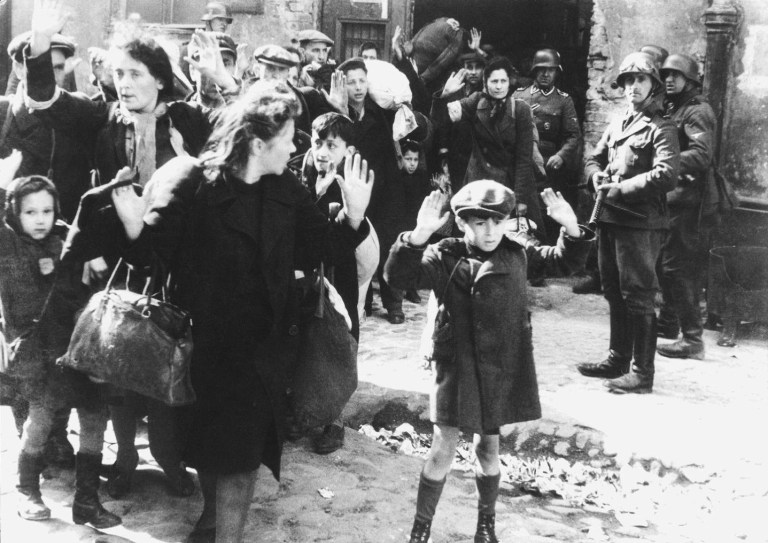
We all heard about Warsaw Ghetto Uprising. Some of us learned about it in schools. Let me first state some facts to remind you briefly what it was about. During World War Two and occupation of Poland by Germany, Warsaw Ghetto Uprising was an act of armed resistance by the remaining Jewish population in the Warsaw ghetto against the Germans. It took place between April 19, 1943 and May 16, 1943. The Warsaw Ghetto Uprising is often confused with Warsaw Uprising initiated a year later in 1944, by the AK or Home Army, Polish military underground resistance, the biggest such organization in Europe. They were two different events.
The so called “Final Solution”, the planned mass killing of the ethnic Jewsby Germans, was already being implemented from the Fall of 1941, about two years after the war broke out. Between 1941 and 1942, about two- three years into the war and occupation, the Germans murdered most of the Jews in the ghetto. Out of about 500,000 Jews only about 60,000-70,000 survived. These numbers are very approximate. In January 1943, Himmler gave an order to liquidate the ghetto completely and to transport the remaining Jews to the death camps to be murdered.
This in a nutshell is what most people know about this horrific historic event. We also often hear that the Jews fought heroically, alone, while the Poles stood by and watched. According to this narrative, Poles were eager to have Jews murdered and take away their property. Some even take it further saying that Poles actively helped the Germans and are co-responsible for the Holocaust. This is an incredible distortion of the truth and a very dishonest opinion about Poles without whom the ghetto uprising would never have happened. In fact, Polish involvement made the uprising possible.
I am going to give you a very good example for comparison. Imagine someone saying that while the Al Qaida terrorists were destroying the Twin Towers on 9/11, Americans stood by and watched indifferently. Imagine someone saying that Americans were responsible for the murder of over 3,000 innocent people on 9/11 because it happened on American soil. Did Americans actually stand there watching the Towers falling? They did. Did many Americans run away from the collapsing towers? Many did, that’s a fact. But we would never misinterpret what they felt and how shocked they were. We would never say, they abandoned their fellow Americans dying in the burning buildings and ran from danger. This would have been the most unjust and twisted version of real context. Americans were helpless at this moment, and watched in horror not indifference. Many rushed to help, sacrificing their lives. Do we condemn those who did not? Of course not, because we understand the entire context.
Poles too were helpless in the face of the mass catastrophe and the horrendous scale of terror inflicted on them by Germans and Soviets at the same time, helpless but not hopeless. They did not stand there watching indifferently. They not only fought using whatever meager resources they possessed, against two powerful invaders, they also tried to organize the rescue operation for the ethnic Jews in the ghetto, despite being in deep horror themselves.
Everything I am saying is well documented by the first hand witnesses, people who were there on all sides. By Poles who participated in the military rescue operation initiated and organized by AK, Home Army – Polish underground resistance, the biggest underground organization in Europe (as described by many direct witnesses e.g. Tadeusz Bednarczyk (Taeddeush Beadnarchick) and Kazimierz Moczarski (Kaezimyezh Mochaersky); by Jurgen Stroop, the German general who commanded the Grossaktion or liquidation of the ghetto;
and by Jewish victims such as Józef Gitler-Barski – they all wrote and spoke their confessions and testimonies.
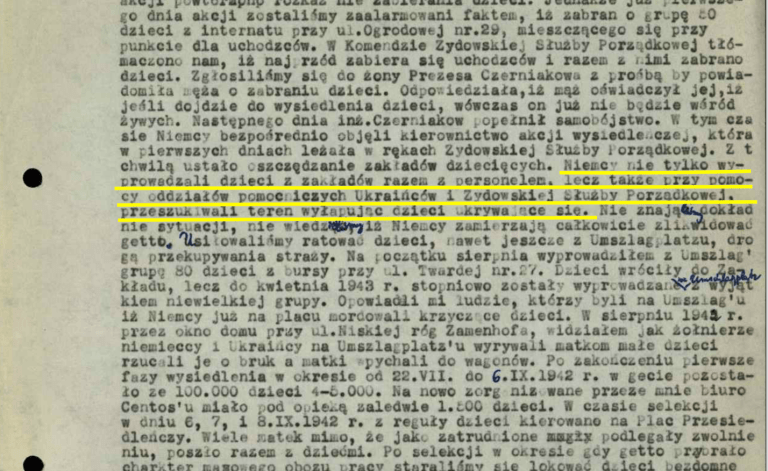
Stroop revealed the most sensitive true and verifiable information about Grossaktion, behind the closed door, while sitting in a prison cell after the war with Kazimierz Moczarski, an AK Polish officer imprisoned by the Stalinists. The Stalinist thugs could not break Moczarski during their brutal interrogations, so to torture him even more morally, they put him in one prison cell with one of the greatest mass murderers in history, Jurgen Stroop, a great enemy to the Pole. Stroop’s confession to Moczarski is one of the most fascinating sources of information.
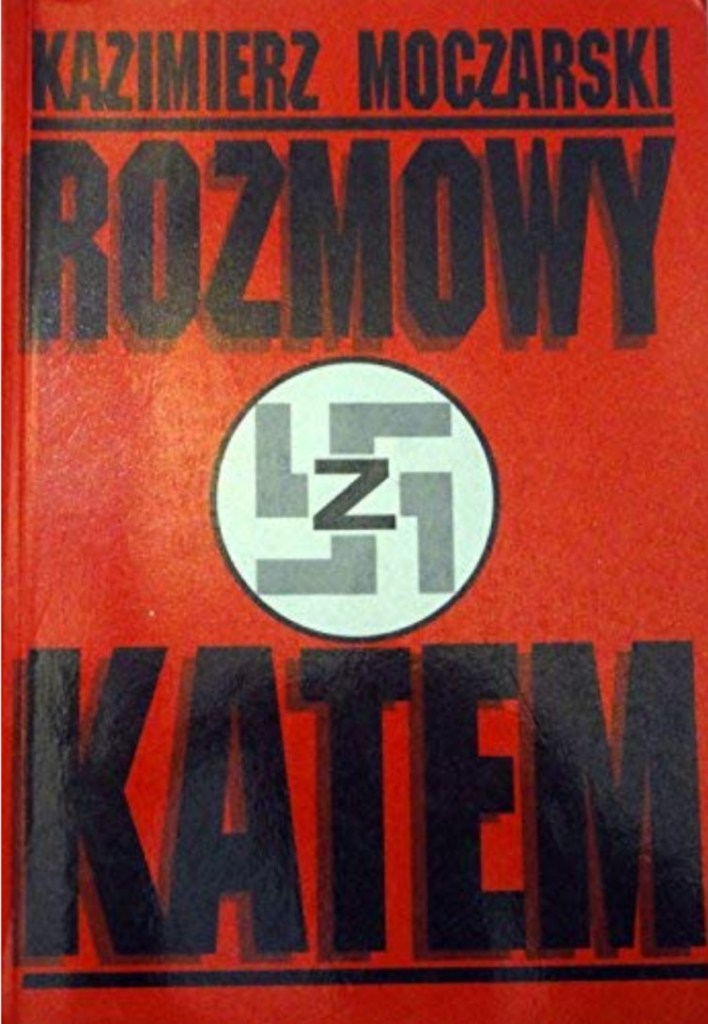
To give you a broader perspective on the situation in the ghetto I will discuss several key elements, major contributors to the tragedy of the Jews in occupied Poland.
One was an incredibly fierce ideological hostility between Jewish political factions. Communist Jews battled against the patriotic assimilated Polish Jews. They were so hostile toward each other that even during the uprising they divided the ghetto into regions and did not want to cooperate with each other.
To even begin to comprehend the scale of the complexity of all this, we first must understand that after re-gaining independence in 1918 and in the 20 years of interwar existence before WW 2, Poland was involved in mortal combat with the Soviet Union trying to prevent bolshevism from spreading all over Poland and Europe in general. All this while trying to rebuild its nation now consisting of free Polish majority and many hostile minorities, Jewish among others, each playing their own political game. BTW, Poland was forced into its borders by the Western powers at the treaty of Versailles of 1918. When Germany attacked Poland on September 1, 1939, and the Soviet Union attacked two weeks later on September 17, 1939, Poland consisted of only 60% of ethnic Poles and 40% of minorities.
Now, Poles faced two overwhelming powerful enemies at once from both sides, and a few other smaller enemies as 5th column from the inside.
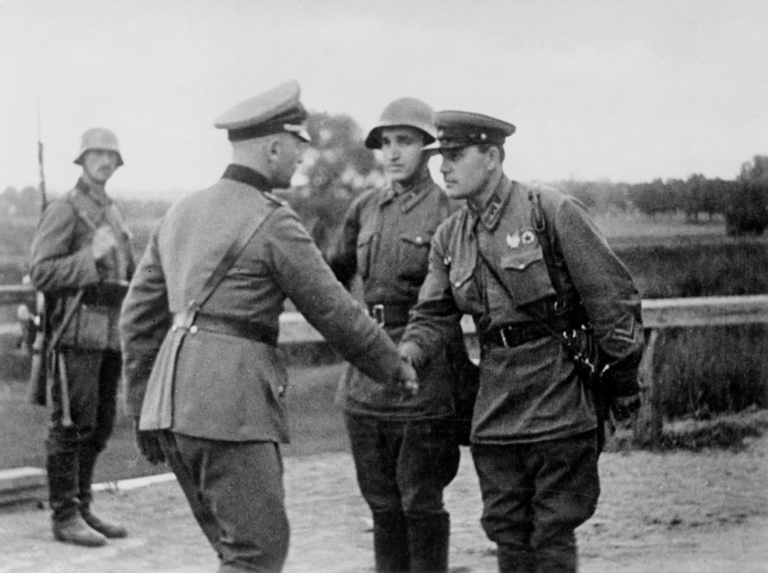
Among those minorities Ukrainians, Belarussians, and Latvians joined the Germans outright and fought alongside the Germans, killing Poles and Polish Jews. Many Polish Jews joined the Soviets killing Poles. So really Poles perceived Jews as traitors. In the chaos of the war it was impossible to tell who was who, and who to trust.
Second, the Jews refused to fight. Majority of the Polish Jews did not want to fight against Germans either because initially they did not see WW 2 as “their” business or because they were not willing to sacrifice. This is clearly stated in Jewish memoirs from that time, for example Diary of the Warsaw Ghetto by Adam Czerniakow, head of Judenrat, Jewish Council. Bednarczyk also writes about it. Many Polish Jews, especially youth, allied themselves with the Soviet Union and in the context of the Soviet aggression against Poland were considered by the Poles as the enemy.
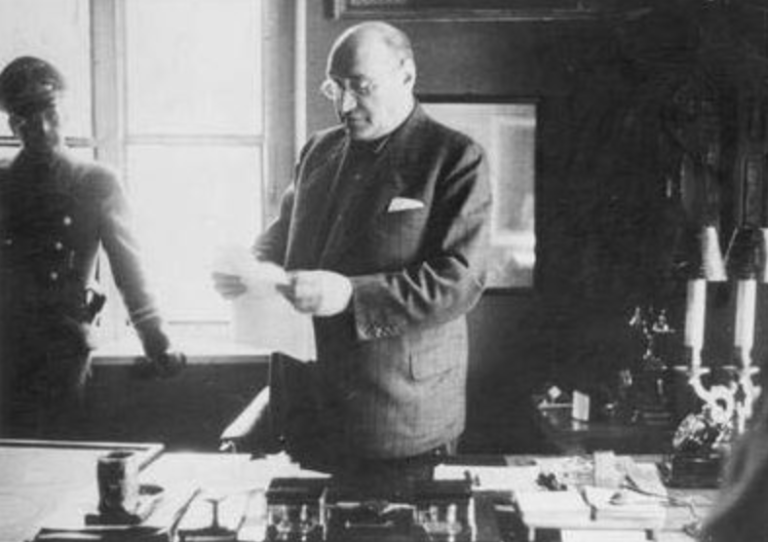
Here is a hugely important fact. On January 19, 1940, Tadeusz Bednarczyk personally participated in the secret meeting between one of the Polish underground resistance organizations constituting AK (Home Army), with the head of the Jewish Council in Warsaw ghetto, Adam Czerniakow, who at that meeting on behalf of Jewish communities refused the pressure from the Poles to join in the nationwide resistance against the occupiers. Czerniakow said that such large-scale resistance was very risky considering significant number of Jews in high positions on the Council being on Gestapo payroll.
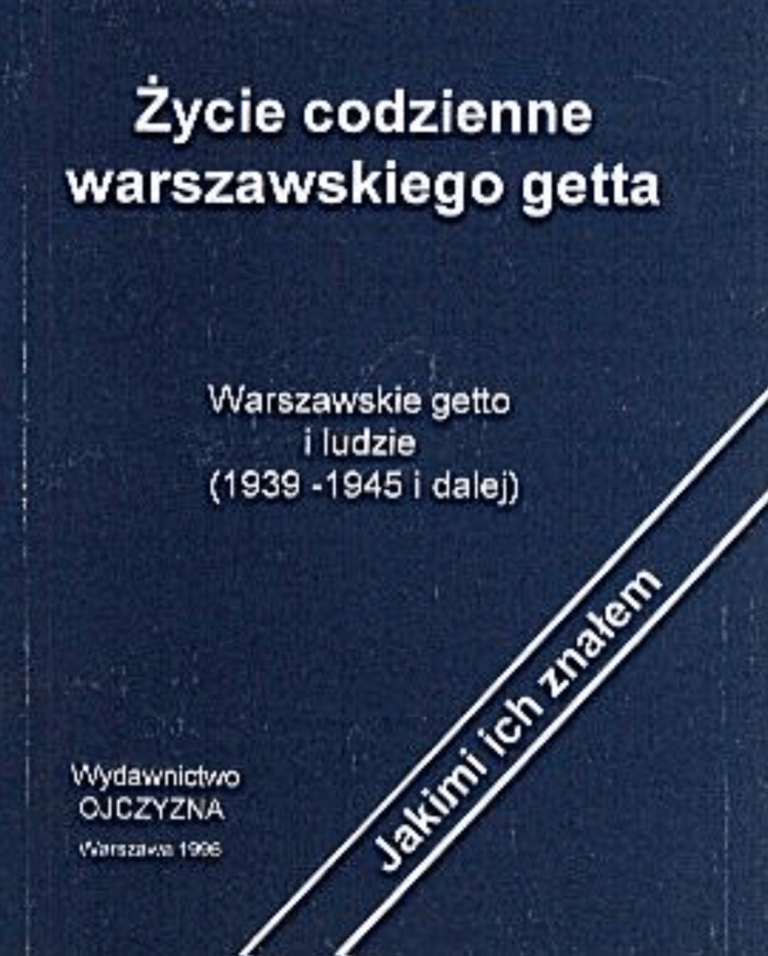
He was also convinced that the Jews had enough money to bribe the Germans, which would allow them to survive the war in relative peace. It is astonishing to realize that many Jews felt the war was between Germans and Poles and did not involve Jews. Their lack of concern about Poland and this self-centered short-sighted attitude was another major element of the conflict between Poles and Jews.
Nevertheless, Polish Home Army, AK tried to organize the Jewish recruitment into the resistance. It was so slow, that AK was reluctant to share their meager resources with the Jews. They were concerned that the precious and difficult to obtain arms would not be fully utilized by the Jews. Bednarczyk says that in the peak of their activities, there were no more than 1,000 fighters in the Jewish military organizations, including volunteers, many of whom were recruited in the last two days before the uprising. Mark Edelman who was one of the Jewish leaders, said later, that their ranks counted 250 members, many lacking any training.
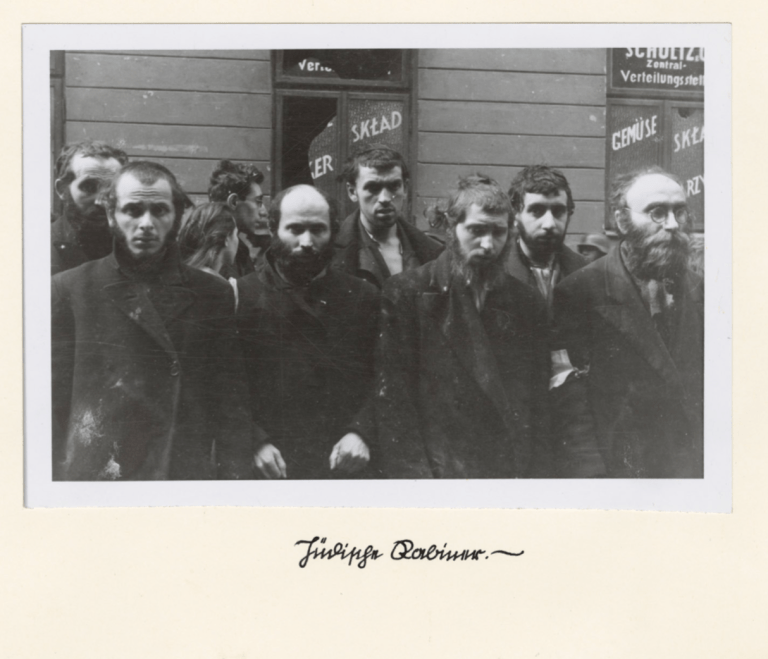
Despite this setback, Polish AK designated military units tasked with helping Jewish population. Some of them included Zbrojne Wyzwolenie – ZW, formed on October 7, 1939 under the command of Andrzej Petrykowski “Tarnawa” – their mission was sabotaging Germans and organizing defense and help for the Jews; and “Skała”, a military organization for helping Jewish civilians – one of the largest organizations in Poland (among them many Jews).
Early in 1940, AK Polish Home Army designated a special unit called “W” (Wola) also under the command of Colonel Andrzej Petrykowski “Tarnawa”, tasked with overseeing help for the Jews in the ghetto. Tarnawa was intensely involved in helping tens of thousands of Jews in Warsaw, Lublin, Lviv, and other cities, raising funds, cooperating with Catholic clergy in hiding the Jews, transferring Jewish civilians out of the ghetto, organizing hiding spots, and organizing units tasked with making life beyond ghetto possible.
Bednarczyk further describes how he and his unit were in charge of transferring arms and ammunition to the ghetto, training the Jewish fighters, engineering design of the tunnels dug under the ghetto in preparation for the resistance, and transferring Jewish civilians out of the ghetto. Most of all they focused on recruiting new fighters.
“But”, Bednarczyk wrote, “Only a handful of the Jewish youth and intelligentsia were willing to enlist. But even those with higher awareness mostly contrived how to lay low and wait for an opportunity to save themselves. I met then and I still meet with an accusation coming from the Jews that Poles did nothing to help, that’s also what they wrote in their letters and reports – and they did this knowing about the attitudes of the Jewish community and about Polish enormous efforts to save them”.
German General Stroop in his confessions to Moczarski, was brutally frank about Jewish passivity that played right into German hands making their tasks much easier. It is hard to listen to this but here is what he said: “My personal experience in Galicia (Eastern Poland) taught me that the first phase of liquidating the Jews is typically relatively easy. They are just loaded into bags like chicken. Passive masses not only go voluntarily, like cattle to slaughter, but also paralyze those who try to actively resist. Those more courageous active elements cannot handle fearful, hysterical masses and typically perish with them.
The second phase is typically more difficult because the survivors are determined and courageous, strong and clever. They resist bitterly.“
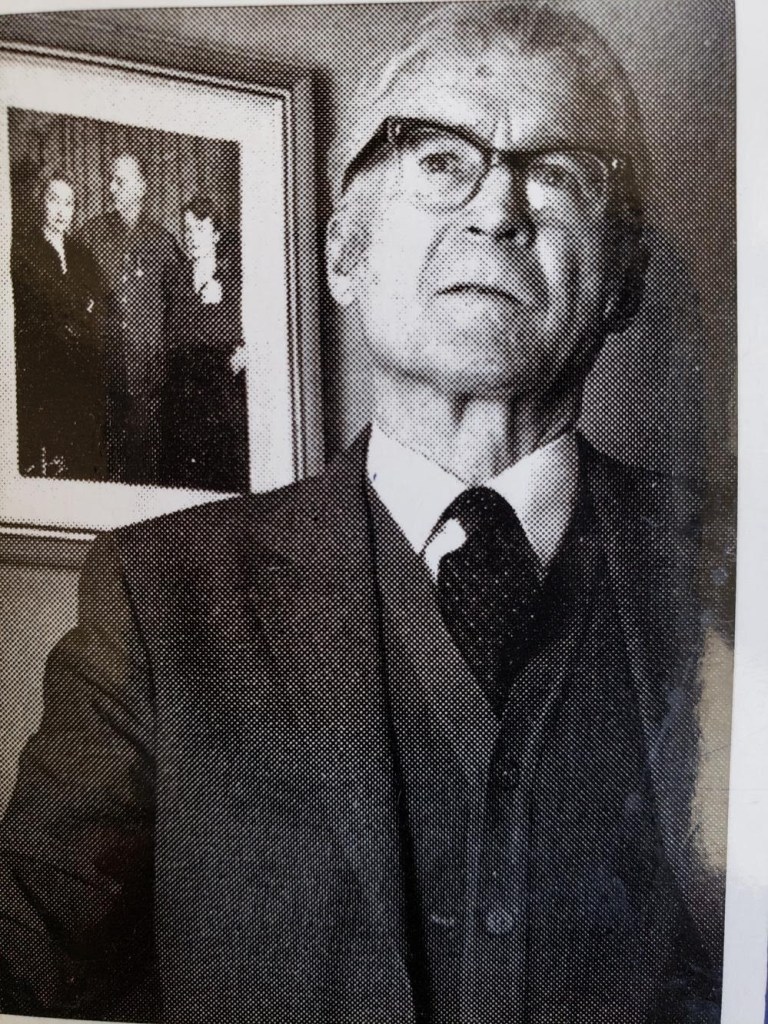
Tadeusz Bednarczyk, who was a Polish underground AK undercover operative, and who worked in the ghetto as a tax collector for the department of treasury and therefore had direct access to the ghetto, says: The Jews in the ghetto often stressed their hatred for the Germans and desire for revenge. But I did not see fighting spirit among them anywhere.” Bednarczyk described his observations in his book, Everyday Life in the Warsaw Ghetto.
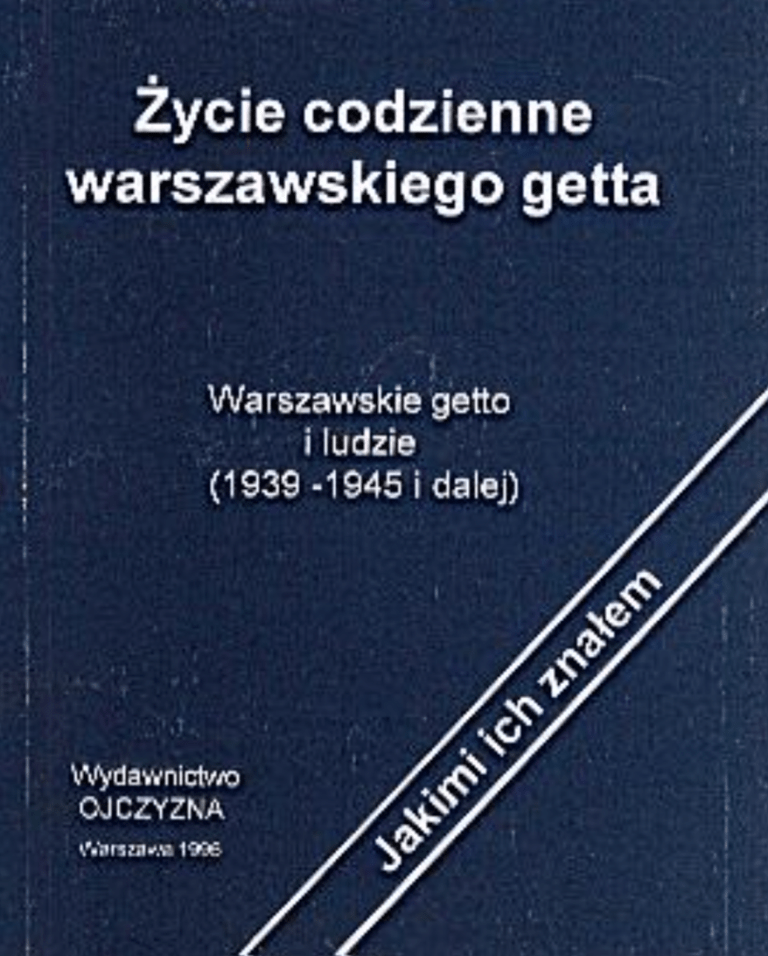
Passivity of the Jewish communities during the first three years of the war and their refusal to fight for Poland, was one of the main problems between ethnic Poles and Jews during and after the occupation and it persists even today. This inaction brought horrific consequences – while Poles were fighting and defending the country between 1939 and 1943, the Jews were almost completely annihilated by relatively small units of German army mainly in the period between 1942 and 1943, during operation Reinhard (first phase of the Final Solution).
Third contributor to the tragedy of the ghetto was Jewish collaboration with the occupiers. Jewish youth supported the Soviet Union for ideological reasons, and Jewish communities collaborated with the Germans not just because of the terror but also for profit or because they identified with the German roots. Whatever the initial reason, their collaboration meant torture and death to the Poles trying to help.
Polish AK and Jewish seed resistance units in the ghetto were very weary of the Jewish collaborators, who sabotaged any attempt of organized military operations and kept the civilians terrorized. There are witness testimonies describing how masses of Jews were herded, loaded onto trains to death camps, or killed by Jewish helpers.
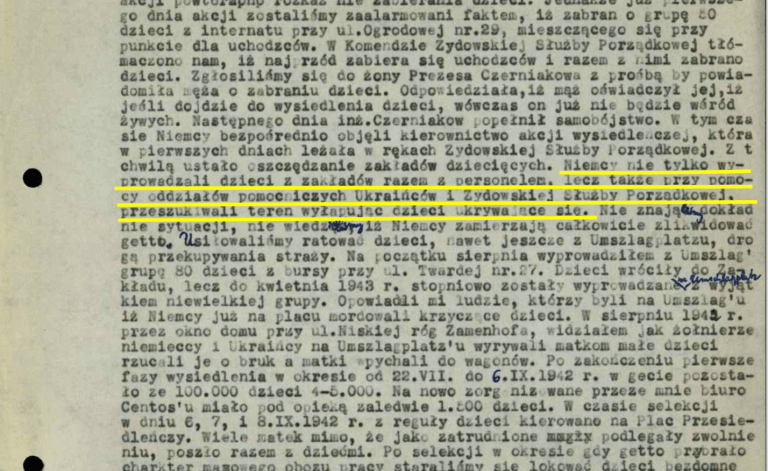
Jozef Gitler-Barski, who was a director of a Jewish organization tasked with caring for children describes Ukrainian and Jewish Police catching fleeing children and bringing them to the trains to be transported to Treblinka.
Bednarczyk writes that for a few weeks before the ghetto uprising it was very easy to leave the ghetto for those who had more or less “Aryan” features. There was a shop in the synagogue on Tłomackie Street, where Poles could get in and the Jews could also enter as workers. They could then leave together with the Poles as “Aryans” without being stopped. Bednarczyk remembers: “We had to be very vigilant and weary of Gestapo, Kripo (Kriminalpolizei), and Jewish traitors sniffing around. I secured a hiding point at the photo shop of Ms. Macharska, where the escapees could wait in hiding before moving on.”
Public executions of the Poles sentenced for hiding Jews, by hanging right next to the ghetto walls, was commonplace to discourage any help.
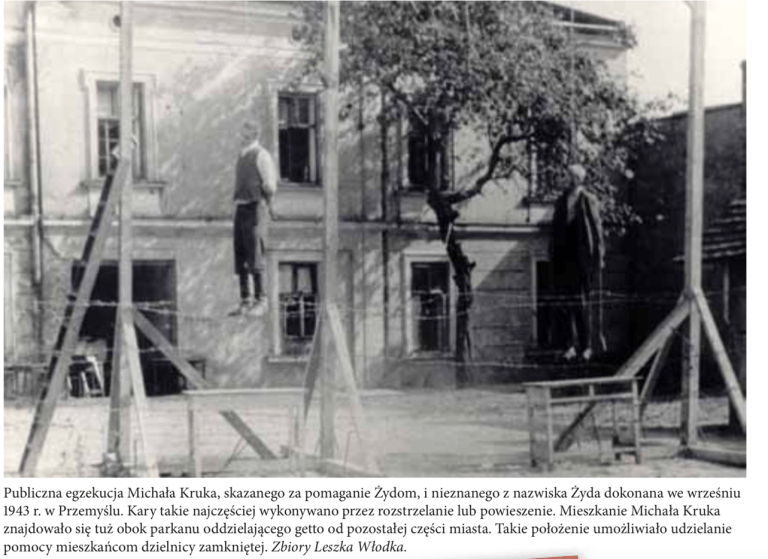
Understanding this context is important to the rest of this story.
Even though in 1943 Polish AK Home Army decided they were not ready for a massive uprising, it appeared there was no choice. Early attempts to form Jewish organized military resistance were failing. Seeing what was happening to the Jews, from early 1942 Polish AK fiercely worked with the Jews in preparation for the inevitable German offensive and Jewish resistance, which was provoked more by desperation than the will to fight the enemy. Polish and Jewish engineers designed and built a network of underground tunnels, with complex hidden exit points, strategically placed to enable the delivery of the supplies to the ghetto and to create escape routes for the Jewish civilians and fighters. These channels became active before the uprising and tens of thousands of Jewish civilians were transferred out to the “Aryan” side before and during the uprising. As Bednarczyk writes, the greatest challenge was constructing effective shoring system to prevent collapse of the tunnels. The teams were just running out of time.
They built barricades in the strategic points, they prepared hiding points within ghetto, and designed escape routes for the fighters. They smuggled arms, medicine, food, and incidental supplies into the ghetto. They kept training the fighters. They also prepared as many locations outside of the ghetto as possible with Polish groups, to hide the escaping Jews. All this in deep secrecy and under the penalty of death to themselves, their families, and the entire neighborhoods.
Bednarczyk personally inspected all the tunnels and other structures. He personally took part in the activities.
The overall planned strategy of the resistance was based on a military handbook written by General “Grot” Rowecki, Chief Commander of AK Polish Home Army, about the military operations within the city. The Jews prepared for battles using instructions and rules implemented by the Polish military.
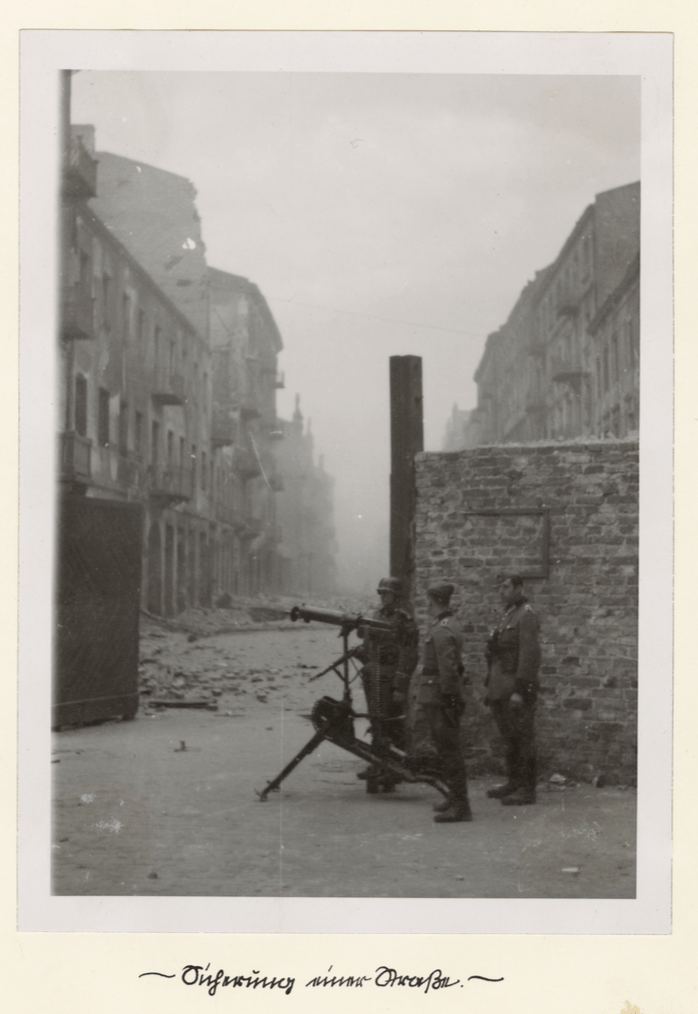
On April 18, 1943, Germans and their auxiliary units of Ukrainians and Belarussians heavily cordoned the ghetto walls. The uprising began on April 19, 1943. On that day the Germans entered the ghetto under the command of Chief SS and German Police in Warsaw District, SS-Oberfuhrer Ferdinand von Sammern-Frankenegg, with 2,000 soldiers, heavy artillery, howitzers, and even fighter planes.
Polish underground intelligence received first signals about the upcoming operation in the beginning of April. On April 6, 1943, Bednarczyk delivered to the Jewish organization a high military alert notification from Tarnawa. Emanuel Ringelblum, Jewish historian wrote in his Warsaw Ghetto Chronicles about his astonishment at the sight of the high-spirited attitude, discipline of the fighters, and number of arms in the Jewish headquarters. The Polish-Jewish units posted watch guards who communicated very effectively with the commanders via acoustic and light signals. In the days directly before Grossaktion, Germans and their accomplices, Ukrainians and Belarussians, harassed the Jewish population with constant plundering raids by their patrol units, with the purpose of maintaining high level of fear and insecurity, coercing the Jews to voluntarily ship themselves to camps where Germans preplanned their murder. They were aided by Jewish collaborators, often Jewish factory directors whose best interest was maintaining status quo and who advocated via megaphones, the voluntary transfer to the camps under false pretenses.
Identifying German strategy from their operations in 1942, helped to anticipate their moves. The Germans met with decisive and aggressive fire from the Jewish and Polish fighters. The element of surprise led to some German losses and they withdrew.
Angry German high command deemed Von Sammern to be incompetent and he was replaced with General Jurgen Stroop.
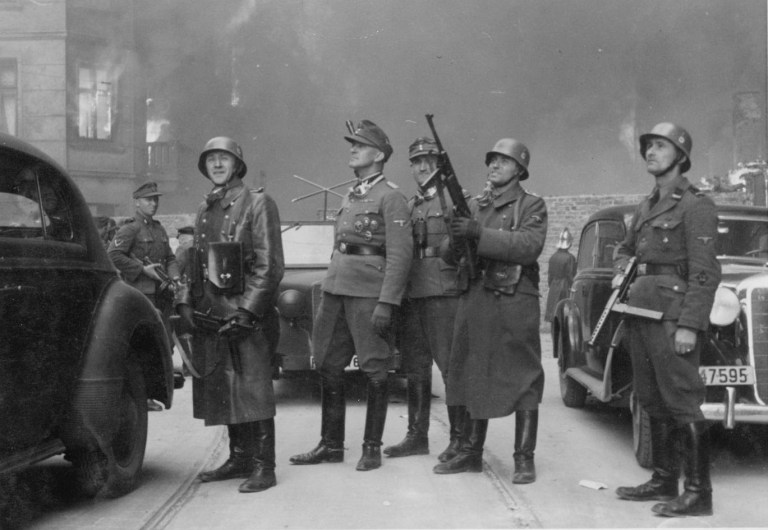
Germans assumed that the Grossaktion would take three days. On Easter Sunday Stroop ordered the operation to start at 1 p.m. so that his troops could sleep in.
Stroop’s much more careful strategy ended in a heavy combat against the Jewish and Polish AK under the command of Sergeant Józef Lejewski “Grabarz”. The decisiveness of the defense shocked Stroop. Germans withdrew again.
On the second day Stroop understood that an initially anticipated 3-day operation was not a realistic expectation and implemented “scorched earth” strategy, burning building after building, smoking the fighters out. During the operation Germans were helped by Jewish traitors who identified the hiding spots and tunnels. The fight often turned into a hunt. According to Stroop, most Jews were hiding not fighting.
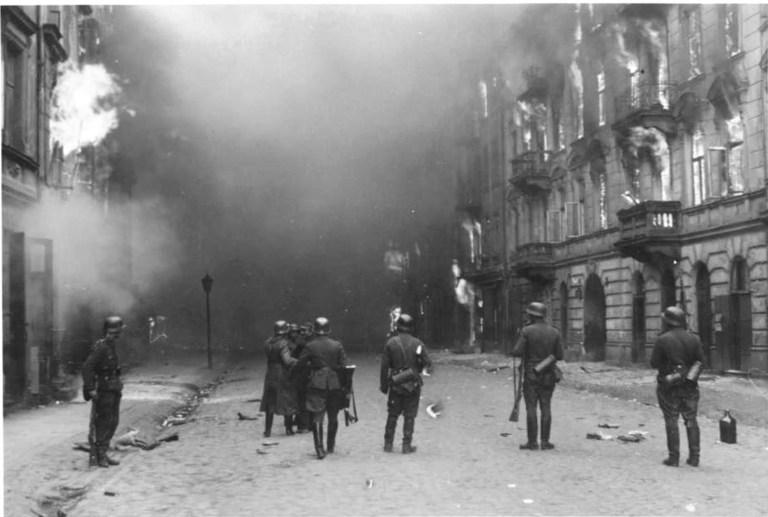
Before the Grossaktion Stroop conducted secret inspection of the ghetto. He related this to Moczarski. “I expected the streets to be crowded. Instead there were hardly any Jews there. It was clear they were forewarned. “
Stroop told Moczarski “We put all formations on high alert because our greatest fear was Polish support for the Jews which would throw the strategy off course.”
“Aryans and Jews resisted actively. In fact, they attacked”. Stroop complained that the so called “Molotov cocktail” thrown on Germans by the fighters effectively stopped German offensive. “Recipe for Molotov cocktail was given to the Jews by Polish AK” Stroop said “Wehrmacht assessed highly it’s defensive characteristics.” When reporting to Himmler, Stroop informed him that the Jews were determined and they had support of the Polish civilians and military underground resistance.
According to Stroop Germans were “helpless” when faced with the system of tunnels designed and built by Poles and Jews. “We never conquered the tunnels”, he confessed to Moczarski. The same phenomenon took place a year later, during the Warsaw Uprising in 1944.
The most iconic battle took place on Muranów plaza. There the fighters hung out two flags, one Jewish – white and blue and the other Polish – white and red. The most telling was Stroop’s reaction to this. When re-telling this story to Moczarski, Stroop got very upset. “These flags were a call to resistance against Germany. Cavalry lieutenant SS Otto Dehmke perished while removing them. Those flags had high political and moral impact. It reminded hundreds of thousands of Poles about their cause, it inspired and excited them. It integrated the population of the GG (General Government), especially Poles and Jews. Standards and flags are the same type of arms as cannons, they are like thousands of cannons. We all understood it. Himmler shouted on the telephone “Listen Stroop, take down the flags at all cost”.
Stroop again: “On April 22 we destroyed a Jewish command hiding spot on the “Aryan” side with reserves of human resources and ammunition. Almost all Jews escaped.”
All this would be impossible without the Poles.
At some point Stroop sent a report to Himmler boasting that he was pleased to say that all leaders of the Polish and Jewish resistance had been killed in action. Himmler reprimanded him angrily that Stroop clearly knew very little about the Poles.
In Stroop’s words: “I saw cold calm on the “Aryan” side. Maybe I was under the influence of cognac but I saw too many Polish gazes going toward the sky over the ghetto. I don’t like such faces. It reminded me that Poles must be watched at all times because they hate Germans.”
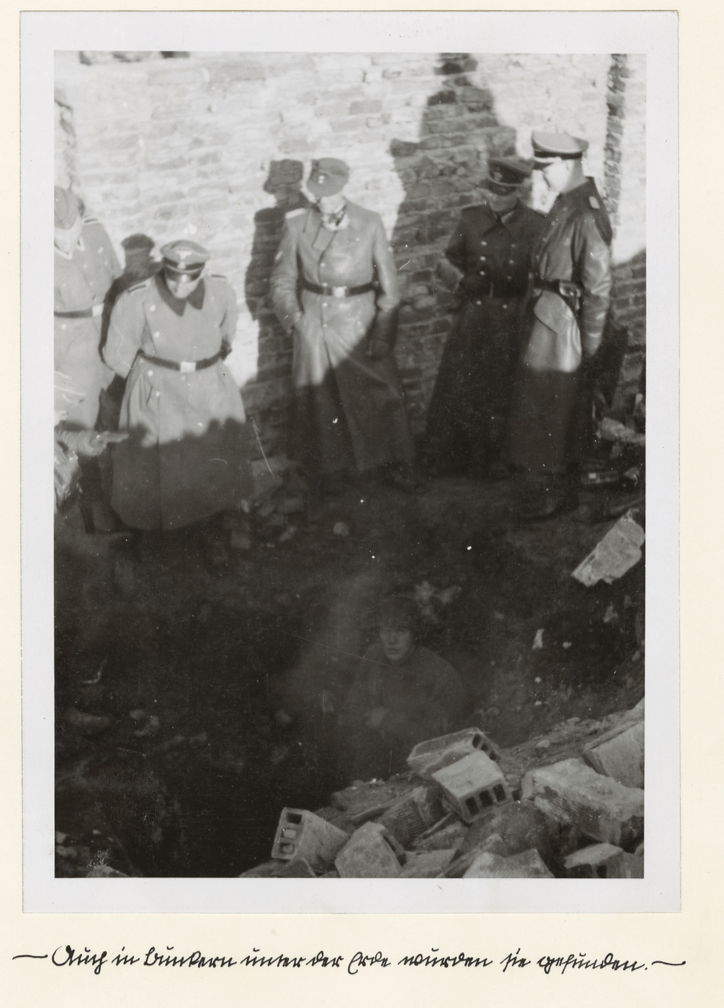
When Stroop retired for the night, he ordered his adjutant not to wake him up before 7 a.m. “I am not available for anybody, with two exceptions. One when SS- Reichsfuhrer Himmler calls me, and the second one if you receive a message that they hung out those flags over the ghetto again.”
On April 22, Stroop called Polish Fire Fighters to take control of the burning ghetto. According to Bednarczyk, the firefighters did just that and more – they helped the Jewish and Polish fighters in the tunnels to carry out quick attacks on Germans, assisting them in and out of the tunnels.
Stroop said: “On April 26, I received a message that in the North East corner of the ghetto on the “Aryan” side a large group of Poles and Jews congregated with weapons. We did not want to provoke the Poles to even more action because if the fire spread all over Warsaw, this would have been a huge problem. There was also Blue Police there. We did not like these Polish policemen. We had to respect general ordinances of the Governor Frank about keeping Polish police, but we knew that at least 40% of them were sworn active deep conspiration operatives of the Polish underground and their government in London.”

In the last heavy battle that began on AK’s orders on April 27, “W” unit under the command of “Bystry” Iwański and “Żarski” Zajdler, Tarnawa’s adjutants delivered more arms and ammunition to the ghetto via tunnels. The fighters managed an effective fire ambush and destroyed a Latvian unit on Muranowski Plaza. A Jewish boy threw a gasoline bottle and destroyed a German tank. Despite courageous resistance they were no match for the well-equipped Germans. According to Bednarczyk, almost all Jewish leaders were killed including Captain Apfelbaum, Alfred Berman, Leon Rodal, Zylberberg, Dawid Barliński, Blum-Binsztok, “Rudy” Sniadowicz, Likiernik, Henigman Goldsztyk, Taube, Pinkus, Jankiel Akerman “Jąkała”. Eryk Złotogóra, Henoch Federbusz, Henryk Lipszyc, Lejzor Staniewicz “Ryba”, Dermatolski, Tadeusz Makower, Chaim Goldberg, Bialoskóra, and half of Polish AK unit. On that one day, Germans lost more than on any other day of the uprising including 100 soldiers, one tank, and a number of arms. Stroop complained bitterly to Moczarski about it.
Part of the fighters, about 34 people, most seriously wounded, including mortally wounded Kazimierz Mendelson “Kałmyk”, transferred via tunnels to the “Aryan” side under the cover of Polish units. Many Poles were heavily wounded, including “Grabarz” Lejewski.
Grabowski helped transport the fighters hidden in his hearse.
On May 6, Germans caught Jewish fighters coming from the “Aryan” side – they were helped by the Poles”, Stroop confirmed.
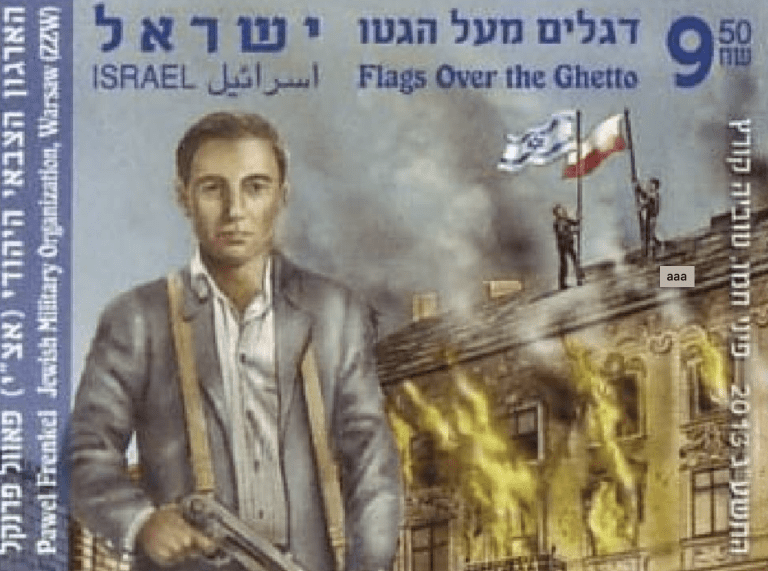
Moczarski confronted Stroop about May 8. On that day Germans opened the main bunker, Jewish headquarters. The battle was bloody. Finally, Germans succeeded and found there many fighters and several Jews who committed suicide.
On May 30, 1943, Bednarczyk and AK unit again brought more ammunition to the ghetto. One must understand that Poles had to “organize” all arms and ammunition and “get” it from somewhere usually by taking it away from the Germans in dangerous operations that entailed punishment in the form of executions of the entire villages, or neighborhoods. To this day there exist posters in the archives saying “One bullet, one German” – a motivational slogan that meant, be very accurate aiming at Germans because every bullet is precious.
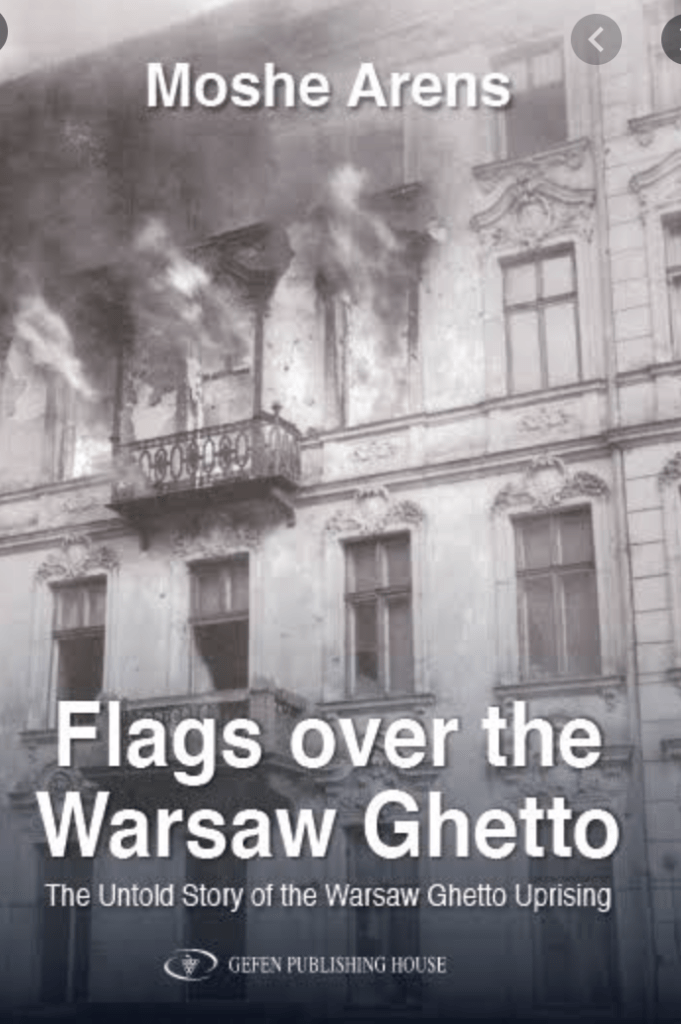
Stroop told Moczarski that Poles were very difficult to infiltrate with the spies and the effectiveness of the Polish underground intelligence caused serious problems. “Even Polish children spied on us”, he complained. “Poles knew how to demoralize German army. They managed to obtain even the most secret information. They went hand in hand with the Jews”, he whined. So, all intelligence was immediately exchanged between Poles and Jews. Chief of the SS intelligence Ludwig Hahn was most afraid of the Polish support for the Jews. Stroop decided that underestimating Polish determination and courage would be foolish.
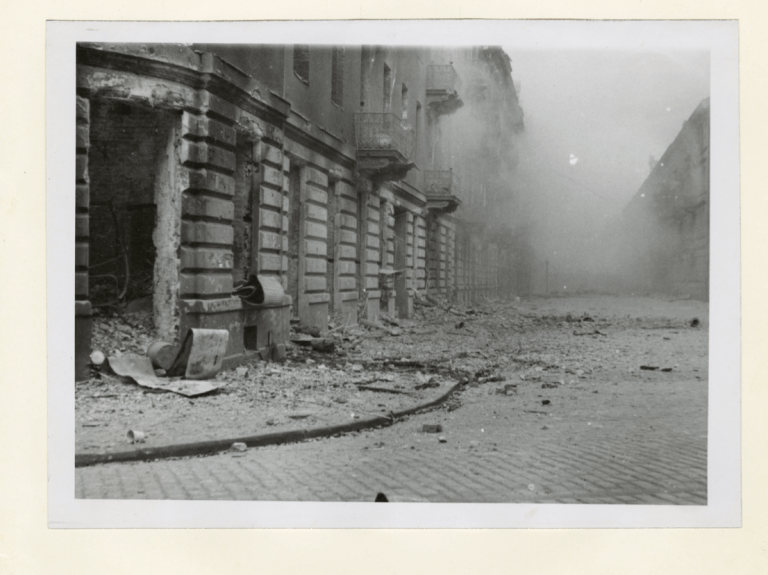
When talking about the Poles blowing up the ghetto wall, Stroop said: “Our propaganda failed trying to stick a wedge between Poles and Jews. Abwehra reported for a long time that since the ghetto was built, Polish AK installed their posts there, smuggled weapons, press, trained Jews in street combat and disarming minefields, they fabricated grenades and Molotov cocktails”.
“We considered fighting alongside the Jews and helping them, our duty, we never expected gratitude, said Bednarczyk, we also followed clear orders of our government-in-exile in London”. But to be falsely accused of inaction and harassed with dishonest twisted lies, is quite something else.
The entire high command in Berlin agreed that for the propaganda purposes we should spread the message that only the communists staged this uprising for their own agenda, even though we knew very well that the uprising was actively supported by all Polish underground organizations and Polish society, Stroop announced.
Ultimately Stroop determined that the uprising was extinguished on May 16, 1943 after Germans caught large numbers of Polish and Jewish fighters. He boasted that exploding Great Synagogue on Tłomackie Street was a fitting conclusion of Grossaktion.
“Warsaw ghetto ceased to exist, because such was the wish of Adolf Hitler and Heinrich Himmler”, he announced.
Stroop was not sure how many Jews and Poles were killed during the uprising, because he reported different numbers in the official documents, to be politically correct, and different in the unofficial secret transmissions.
According to Moczarski, from 1941 Warsaw ghetto was a secret killing ground where Germans executed Poles brought from Pawiak prison. After the uprising, in the smoldering ruins Germans executed about 20,000 Poles. Their remains were mixed up with the fallen Jews. Therefore, the total number of the Jewish victims typically quoted by scholars as 50,000 – 70,000 is misleading.
So often we hear complaints against the Poles. Why Poles did not save the Jews. The answer is because Poles could not even save themselves. They watched helplessly in horror what Germans and Soviets did to them, their families, neighbors, and strangers. They watched in horror the tragedy of Polish Jews, many of whom were friends. As a comparison, Polish uprising of 1944 also failed tragically – as during the Warsaw Ghetto Uprising Poles were simply not equipped sufficiently against the powerful German army with the Soviets sabotaging Polish struggle. 200,000 Poles died during Warsaw Uprising in 1944.
Adolf Rudnicki, born Aron Hirschhorn, who hid in the ghetto wrote that except a really small faction of extremists, the entire Polish underground nationwide helped Jews. In the same spirit wrote Professor Hirszfeld, “Doktor Twardy” Professor Aleksandrowicz, who was decorated with the highest Polish order of Virtuti Militari; Wieliczker; Chaim Aron Kaplan and many others. Their memoirs are not re-published even though they were bestsellers, they are silenced.
In his official report Stroop smears Poles for their supposed corruption – this was consistent with the German propaganda about inferiority of Polish morality and according to the policy of driving a wedge between Poles and Jews. But behind the closed door, Stroop told the true story. He said, that before entering the ghetto, the Germans were gravely concerned about expected Polish military and civilian initiative and support for the Jews. They did not want the battles to infect the entire Warsaw.
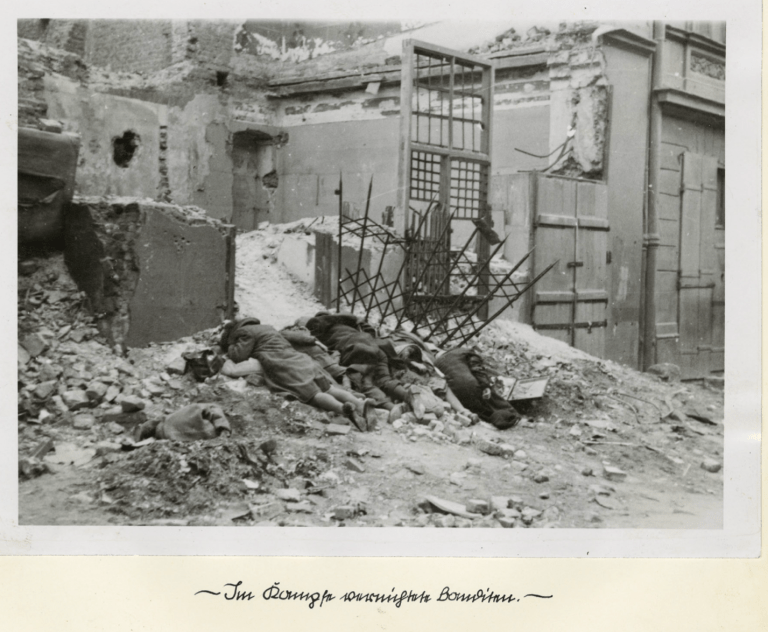
Somehow, Stroop had to justify to his superiors why the liquidation of ghetto took him so long. He confessed, he could not officially admit that the fierce resistance staged by the Jews and Poles shocked him. So in his official report he lied about many things to present himself in a better light and excuse his heavy losses during the battle.
I think that the following quote from Moczarski’s book, coming from Jurgen Stroop will be the best conclusion of the story of the Warsaw Ghetto Uprising.

Stroop was concerned about his upcoming trial. “I am not sure what attitude I should assume, he mused. If I am to tell the truth, I will have to say that the Jews and the Poles were heroes. If, however, I am to lose my head regardless of what I say, I contemplate using a lie. I will tell them that all this Jewish resistance was “garbage” and child’s play, that their women were hysterical cowards and that Poles looked indifferently or even with approval on the liquidation of the Jews.” Stroop did lose his head – he was executed after a trial in Poland, in 1952. And his lies in an official report are used to this day as a basis for the existing false narrative. Stroop’s curse is still haunting his victims today.
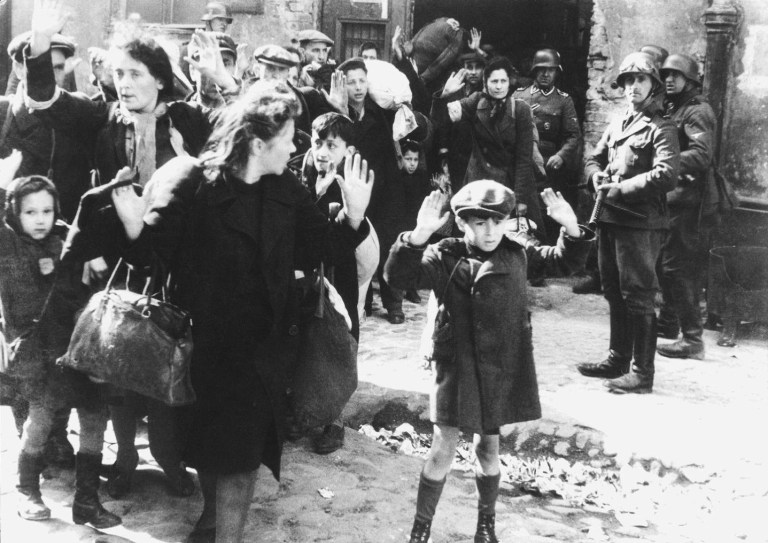
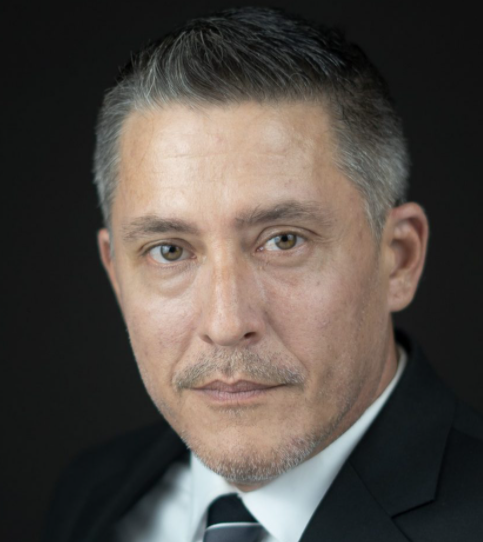

Dodaj
komentarz
By dodać komentarz musisz być zalogowany. Zaloguj się.
Nie masz jeszcze konta? Zarejestruj się.